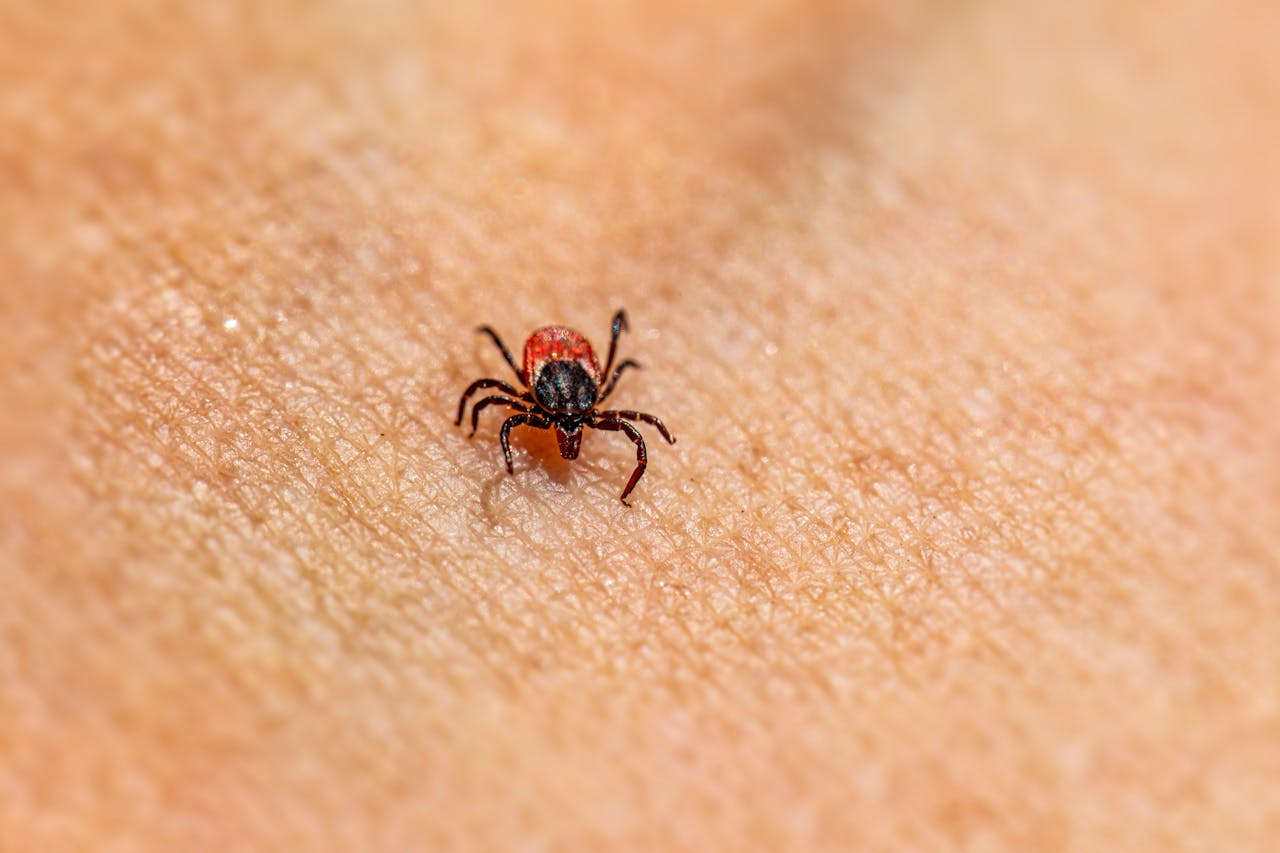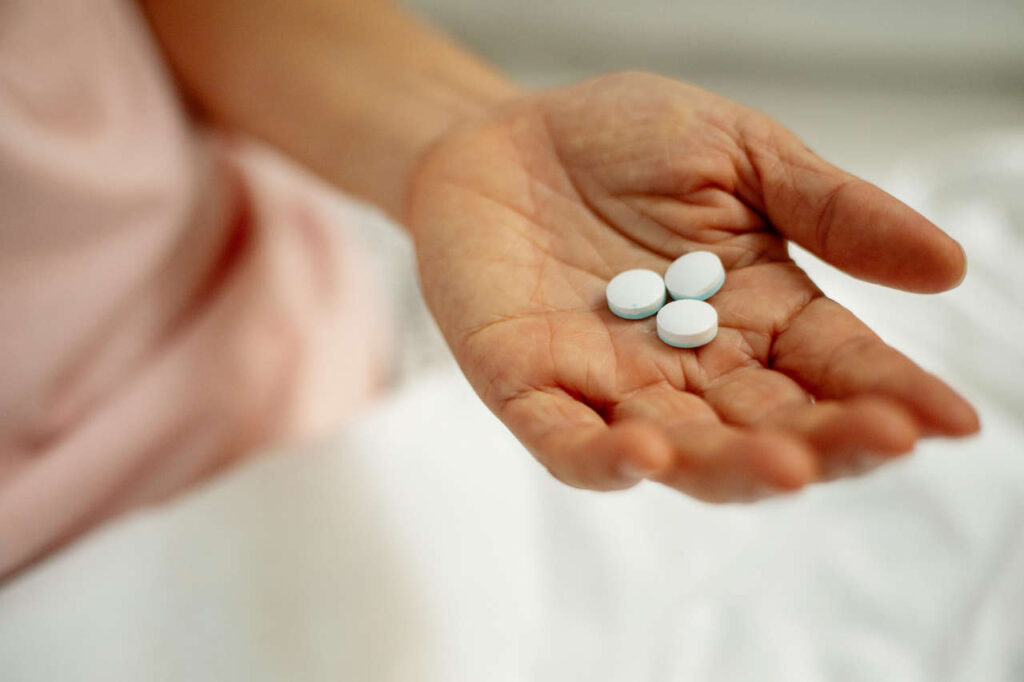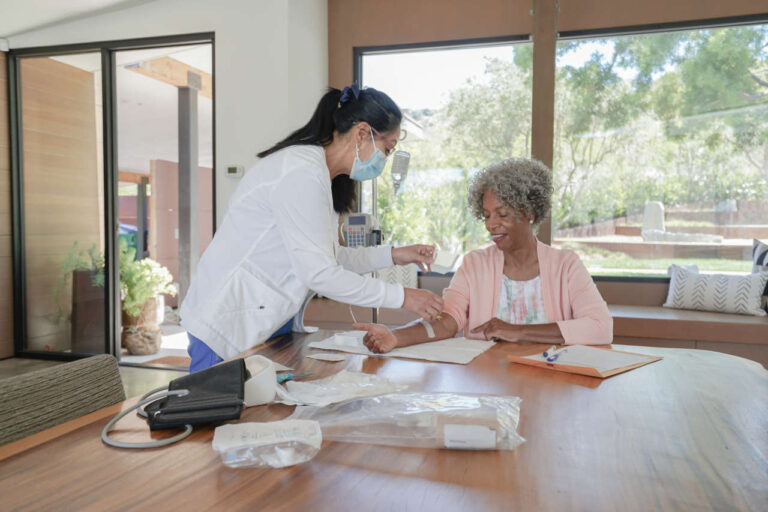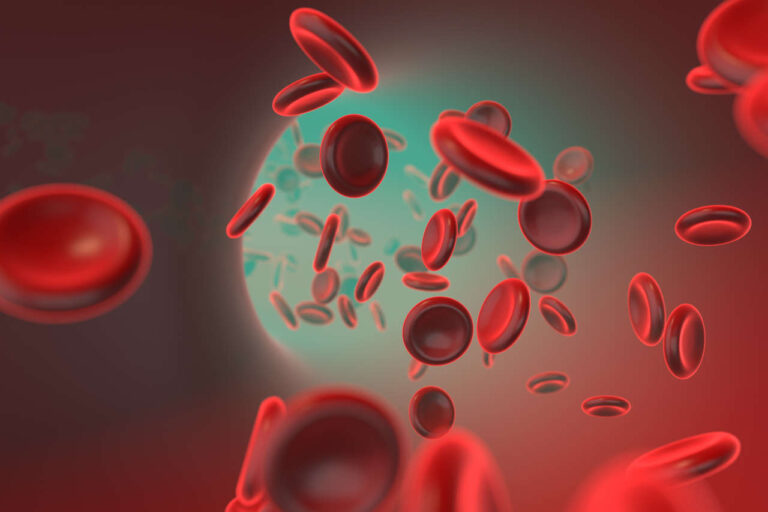
Bệnh Lyme là một trong những bệnh do ve truyền phổ biến nhất trên thế giới. Theo thống kê của Trung tâm Kiểm soát và Phòng ngừa Dịch bệnh (CDC), ảnh hưởng đến hơn 30.000 người hàng năm chỉ tính riêng tại Hoa Kỳ.
Thông tin điều trị | Nhận sự cho phép trước của IVIG
Tuy nhiên, phương pháp điều trị bệnh này còn hạn chế. Kháng sinh là lựa chọn đầu tiên mà hầu hết bác sĩ cân nhắc. Tuy nhiên, với tình trạng kháng kháng sinh ngày càng gia tăng, chúng có thể không còn hiệu quả trong tương lai. Một phương pháp điều trị khả thi khác cho bệnh Lyme có thể là truyền tĩnh mạch (IVIG).
IVIG có tiềm năng cải thiện chức năng miễn dịch và chống lại bệnh Lyme. Tuy nhiên, hiệu quả của nó vẫn còn là một chủ đề gây tranh cãi.
Hôm nay, chúng ta sẽ xem xét các nghiên cứu liên quan đến truyền IVIG cho bệnh Lyme để xem liệu phương pháp này có thể là một phương pháp điều trị đáng tin cậy cho những người mắc bệnh hay không. Trước tiên, hãy cùng tìm hiểu thêm về căn bệnh này.
Bệnh Lyme là gì?
Bệnh Lyme là một bệnh truyền nhiễm được phát hiện lần đầu tiên vào những năm 1970 tại Old Lyme, Connecticut. Ở Bắc Mỹ, bệnh này do Borrelia burgdorferi Và Borrelia mayonii vi khuẩn lây truyền vào máu thông qua vết cắn của ve hươu bị nhiễm bệnh.
Những người tìm kiếm phương pháp điều trị bằng IVIG cho bệnh Lyme thường là những người sống ở các khu vực rừng rậm, nơi có nhiều loại bọ này sinh sống. Ve động vật thông thường không mang loại nhiễm trùng này.
Ve chân đen trở thành vật mang loại vi khuẩn đặc hiệu này khi chúng cắn hươu hoặc chim bị nhiễm bệnh. Sau khi bám trên da bạn trong 36-48 giờ, chúng truyền vi khuẩn cho bạn.
Các triệu chứng của bệnh Lyme
Bệnh Lyme tiến triển theo từng giai đoạn, mỗi giai đoạn có các triệu chứng cụ thể, đôi khi có thể chồng chéo lên nhau. Truyền IVIG được chỉ định cho các giai đoạn sau của bệnh Lyme.
Chúng ta hãy xem xét kỹ hơn từng giai đoạn.
Giai đoạn một: Bệnh Lyme khu trú giai đoạn đầu
Bác sĩ thường không kê đơn IVIG cho giai đoạn bệnh Lyme này, xảy ra từ 3-30 ngày sau khi bị ve cắn.
Triệu chứng chính của giai đoạn này của bệnh là phát ban hình bia bắn (ban đỏ di chuyển) tại vị trí vết cắn, sẽ mờ dần. Phát ban này có thể gây cảm giác ấm nhưng không đau hoặc ngứa.
Các triệu chứng khác của giai đoạn này bao gồm:
- Ớn lạnh
- Sốt
- Mệt mỏi
- Đau họng
- Đau đầu
- Đau cơ
- Độ cứng khớp
- Các vấn đề về thị lực
- Hạch bạch huyết to
Giai đoạn hai: Bệnh Lyme lan tỏa sớm
Giai đoạn thứ hai của bệnh bắt đầu một tháng sau khi bị ve cắn và có thể kéo dài đến bốn tháng. Giai đoạn này của bệnh Lyme cũng có thể không đủ điều kiện để điều trị bằng IVIG.
Giai đoạn phát ban sớm nguy hiểm hơn giai đoạn trước và biểu thị sự lây lan của bệnh nhiễm trùng khắp cơ thể.
Các triệu chứng của giai đoạn này bao gồm:
- Mí mắt sưng
- Nhịp tim không đều
- Đau lưng, hông và chân
- Đau mắt và mất thị lực
- Yếu cơ mặt
- Phát ban khắp cơ thể
- Đau và cứng ở cổ
- Tê ở tay và chân
Giai đoạn ba: Bệnh Lyme lan tỏa muộn
Truyền IVIG hữu ích nhất cho giai đoạn này của bệnh Lyme, được gọi là giai đoạn lan tỏa muộn hoặc giai đoạn dai dẳng. Giai đoạn này có thể xảy ra nhiều tháng hoặc thậm chí nhiều năm sau khi bị cắn.
Các triệu chứng nguy hiểm của giai đoạn bệnh Lyme này đòi hỏi phải sử dụng IVIG bao gồm:
- Viêm khớp ở các khớp lớn (đầu gối, v.v.)
- Các rối loạn não như bệnh não dẫn đến:
- Khó ngủ
- Sự mù mờ về tinh thần
- Khó tập trung
- Mất trí nhớ tạm thời
- Tê tay, cánh tay, chân và bàn chân
- Các bệnh về da như viêm da mãn tính teo da
Hầu hết mọi người đều gặp phải các triệu chứng này ở mỗi giai đoạn của bệnh. Tuy nhiên, điều quan trọng cần lưu ý là các triệu chứng có thể chồng chéo lên nhau. Một số người có thể không gặp các triệu chứng ở giai đoạn đầu và chỉ nhận thấy các dấu hiệu ở giai đoạn sau.
Điều quan trọng là phải đến gặp bác sĩ ngay khi bạn bắt đầu nhận thấy bất kỳ triệu chứng nào trong số này. Bạn càng điều trị bệnh Lyme sớm bằng IVIG hoặc kháng sinh thì càng ít gặp biến chứng.
Bệnh Lyme được chẩn đoán như thế nào?
Trước khi bác sĩ kê đơn truyền IVIG cho bệnh Lyme, họ phải đưa ra chẩn đoán chính xác.
Nếu bạn nghi ngờ bị ve cắn và đến gặp bác sĩ, điều đầu tiên họ sẽ làm là hỏi về các triệu chứng của bạn. Họ sẽ xem xét tiền sử sức khỏe của bạn và tìm kiếm các dấu hiệu phát ban trên cơ thể bạn.
Họ cũng có thể yêu cầu thực hiện các xét nghiệm sau để đưa ra chẩn đoán xác định và kê đơn IVIG cho bệnh Lyme nếu chẩn đoán đúng:
- MỘT xét nghiệm miễn dịch liên kết enzyme (ELISA)
- MỘT vết bẩn phía tây phân tích để xác nhận đánh giá ELISA dương tính
- MỘT phản ứng chuỗi polymerase xét nghiệm (PCR)
Nếu bạn mắc bệnh Lyme, bước tiếp theo là xác định phương pháp điều trị tốt nhất.
Điều trị bệnh Lyme

Phương pháp điều trị đầu tiên cho bệnh Lyme ở giai đoạn đầu là một liệu trình thuốc kháng sinh. Các bác sĩ thường khuyên dùng doxycycline, amoxicillin hoặc cefuroxime axetil cho hầu hết bệnh nhân, dù là người lớn hay trẻ em.
Thời gian điều trị phụ thuộc vào giai đoạn bệnh. Giai đoạn càng sớm thì thời gian điều trị càng ngắn.
Ở giai đoạn tiến triển hơn của bệnh Lyme, bác sĩ có thể cân nhắc phương pháp điều trị truyền IVIG.
Truyền IVIG cho bệnh Lyme
IVIG, hay liệu pháp immunoglobulin tĩnh mạch, là một hình thức truyền dịch dựa trên protein. Liệu pháp này bao gồm việc truyền dung dịch kháng thể cô đặc lấy từ huyết tương của người hiến tặng khỏe mạnh trực tiếp vào máu bệnh nhân.
Phổ biến nhất tình trạng IVIG điều trị bao gồm các rối loạn tự miễn và các bệnh viêm nhiễm. Tuy nhiên, phương pháp điều trị này cũng có thể hiệu quả đối với các bệnh truyền nhiễm như bệnh Lyme.
Các kháng thể khỏe mạnh trong IVIG có thể tăng cường hệ thống miễn dịch và giúp cơ thể có cơ hội chống lại vi khuẩn tốt hơn. Nhưng nghiên cứu nói gì về hiệu quả của truyền IVIG trong điều trị bệnh Lyme? Hãy cùng tìm hiểu.
IVIG có hiệu quả trong điều trị bệnh Lyme không? Một cái nhìn tổng quan về các nghiên cứu

Mặc dù cần nhiều nghiên cứu hơn để đánh giá hiệu quả của liệu pháp immunoglobulin đối với bệnh Lyme, nhưng nghiên cứu hiện tại cho thấy kết quả khả quan.
Dưới đây là một số nghiên cứu nổi bật nhất đánh giá liệu pháp IVIG cho căn bệnh truyền nhiễm này.
Viêm rễ thần kinh do Lyme được điều trị bằng immunoglobulin tiêm tĩnh mạch
Viêm rễ thần kinh do Lyme là một biến chứng thần kinh của bệnh Lyme, có thể gây đau và tê ở chân, hông và lưng. Việc điều trị dựa vào kháng sinh, nhưng một nghiên cứu đã xem xét hiệu quả của IVIG đối với biến chứng này của bệnh Lyme.
Cái này học Trường hợp của một người đàn ông 68 tuổi, than phiền bị đau cơ và yếu cơ bụng, không thể đi lại được. Sau khi khám, các bác sĩ phát hiện ông cũng bị yếu cơ mặt, cơ tay chân trên và dưới.
Họ đã truyền tĩnh mạch 0,4 g/kg IVIG cho bệnh Lyme trong năm ngày. Đến ngày thứ tư, các triệu chứng của bệnh nhân đã cải thiện đáng kể. Bệnh nhân có thể đi lại và chạy bộ trở lại.
Việc điều trị bằng IVIG kéo dài sáu tháng. Trong thời gian này, ông được truyền dịch mỗi tháng một lần và không có triệu chứng nào khác mà không cần bất kỳ phương pháp điều trị nào khác.
IVIG cho bệnh đa dây thần kinh cấp tính mất myelin liên quan đến bệnh Lyme
Khác học Một bệnh nhân nam 58 tuổi nhập viện với các triệu chứng đau cơ lan tỏa, ớn lạnh và sốt. Khi nhập viện, sức cơ của bệnh nhân bình thường. Tuy nhiên, trong thời gian nằm viện, cơ bắp của bệnh nhân trở nên yếu hơn.
Điểm yếu này rõ rệt hơn ở vai, chi dưới, cơ gấp hông và cơ duỗi gối. Xét nghiệm điện cơ đồ (EMG) vào tuần thứ 2 cho thấy dấu hiệu của bệnh lý đa dây thần kinh cảm giác vận động mất myelin, và xét nghiệm máu theo phương pháp Western xác nhận bệnh Lyme.
Anh ấy bắt đầu được truyền IVIG để điều trị bệnh Lyme vào ngày thứ 33. Các bác sĩ đã tiêm tổng cộng 5 liều trong năm ngày.
Vào ngày thứ 38, bệnh nhân được xuất viện với sức mạnh cơ bắp được cải thiện và khả năng đi lại nhờ sự hỗ trợ của thiết bị hỗ trợ. Hai tháng sau, sức mạnh cơ bắp của bệnh nhân đã hồi phục hoàn toàn và có thể trở lại các hoạt động bình thường.
Truyền IVIG cho bệnh Lyme và PANDAS
Một trong những nhóm người mắc bệnh Lyme nhiều nhất là trẻ em từ 5-14 tuổi. Một học sử dụng kết hợp thuốc kháng sinh và IVIG để điều trị bệnh Lyme cho một bệnh nhân nữ 7 tuổi có dấu hiệu huyết thanh của bệnh.
Bệnh nhân này đã đến thăm một vùng lưu hành ve ở Hoa Kỳ sáu tháng trước cùng cha mẹ và khi khám bệnh, bệnh nhân có nhiều triệu chứng thần kinh tâm thần. Bệnh nhân cũng đáp ứng các tiêu chuẩn chẩn đoán rối loạn thần kinh tâm thần tự miễn ở trẻ em liên quan đến nhiễm trùng liên cầu khuẩn (PANDAS).
Các bác sĩ đã kê đơn thuốc kháng sinh và ba liệu trình Điều trị truyền IVIG. Cô ấy đã hoàn toàn bình phục khỏi bệnh và không còn bất kỳ triệu chứng nào.
Lời cuối cùng về hiệu quả của truyền IVIG đối với bệnh Lyme
Như bạn có thể thấy từ các nghiên cứu trên, việc điều trị bệnh Lyme bằng IVIG là khả thi. Liệu pháp immunoglobulin tĩnh mạch có thể là một giải pháp an toàn và hiệu quả để chống lại căn bệnh truyền nhiễm này.
Tuy nhiên, cần có thêm nhiều nghiên cứu lâm sàng để xác định liều lượng và thời gian điều trị tối ưu. Các nghiên cứu này cũng nên xem xét các loại kháng sinh sẽ hiệu quả hơn khi kết hợp với IVIG để điều trị bệnh Lyme.













